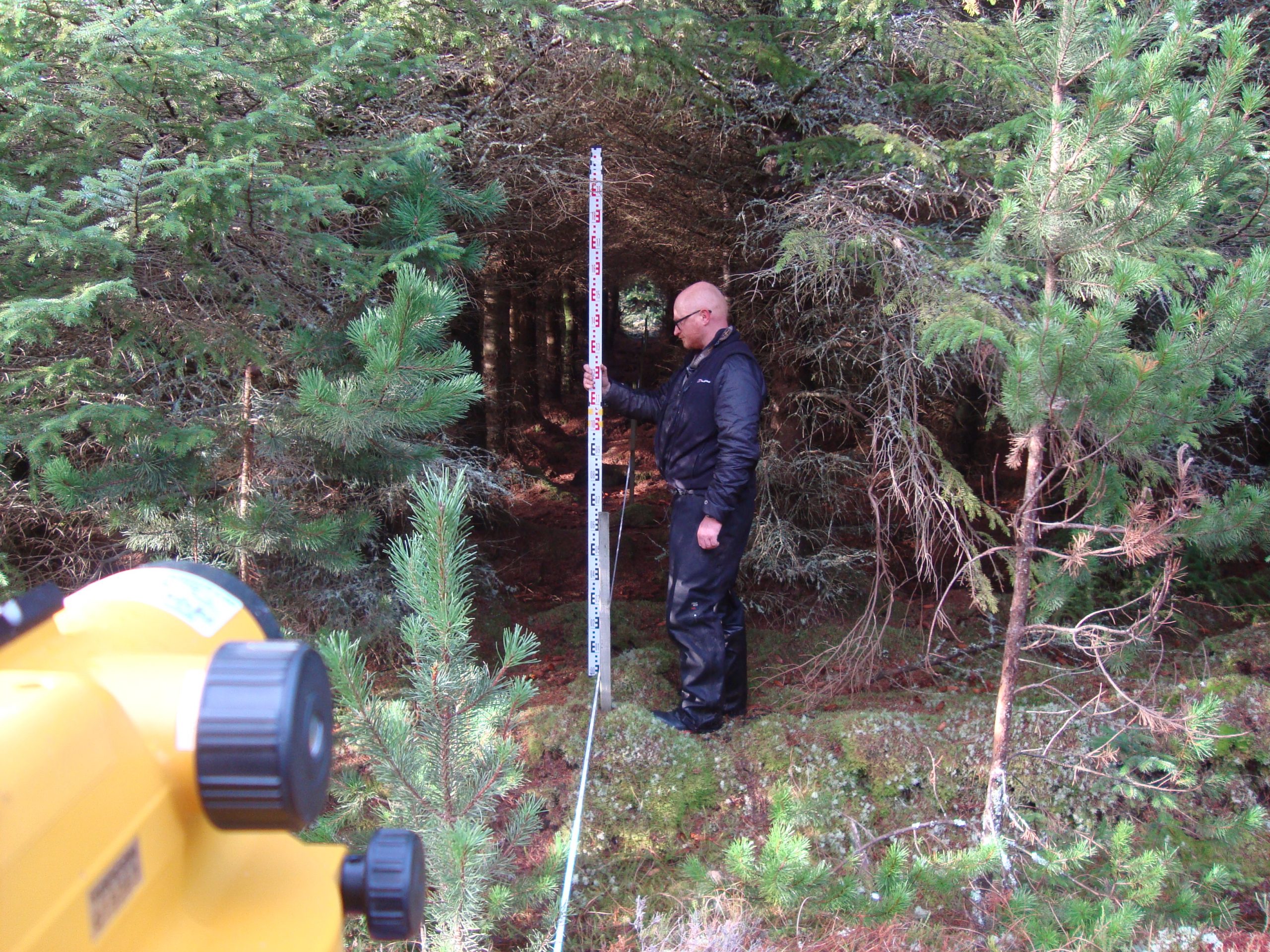In the UK, large areas of peatland were drained for forestry in the second half of the 20th century. Ground surface subsidence and diminishing depth (thickness) of the peat layer can indicate compaction of the peat and/or carbon loss, but there are few long-term datasets from afforested UK peatlands. Here we present an unprecedented 50-year time series of surface subsidence from Bad a’Cheo Forest (Caithness, Scotland). This site was initially surveyed for ground level and peat depth in 1966, prior to drainage and plantation, with repeat surveys roughly 20 and 30 years after drainage. We re-surveyed the site 50 years after initial drainage, producing a unique long-term time series to assess change since these historical studies. Significant subsidence has taken place since drainage, with an average reduction of 56.8 cm (or 13 %) in the depth of peat under forest stands. Subsidence of the peat surface was rapid in the initial phase after drainage and planting but has progressively slowed, with relatively little change between the surveys of 1996 and 2016. These results imply carbon loss but do not demonstrate it directly, as compaction of the peat is also probable. The subsidence data demonstrate that drainage followed by afforestation led to a considerable reduction in thickness of the peat layer and show how this evolved through time.
Sloan, T., Payne, R.J., Anderson, A.R., Gilbert, P., Mauquoy, D., Newton, A.J. & Andersen, R. (2019). Ground surface subsidence in an afforested peatland fifty years after drainage and planting. Mires and Peat 23 Article 06, 1-12.

